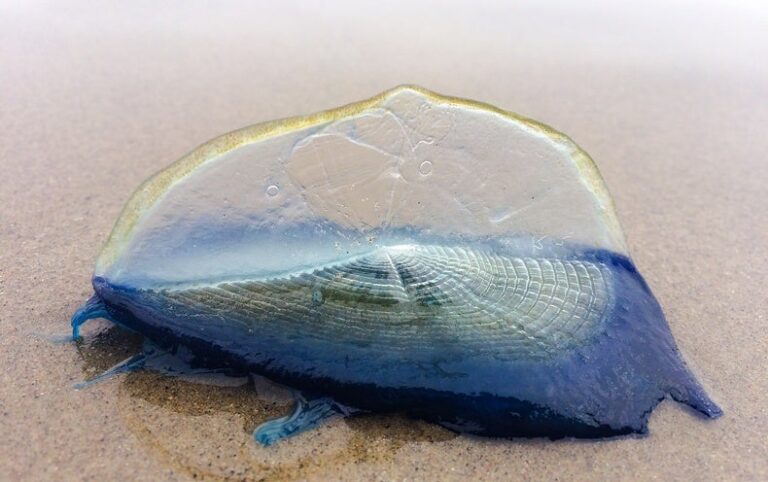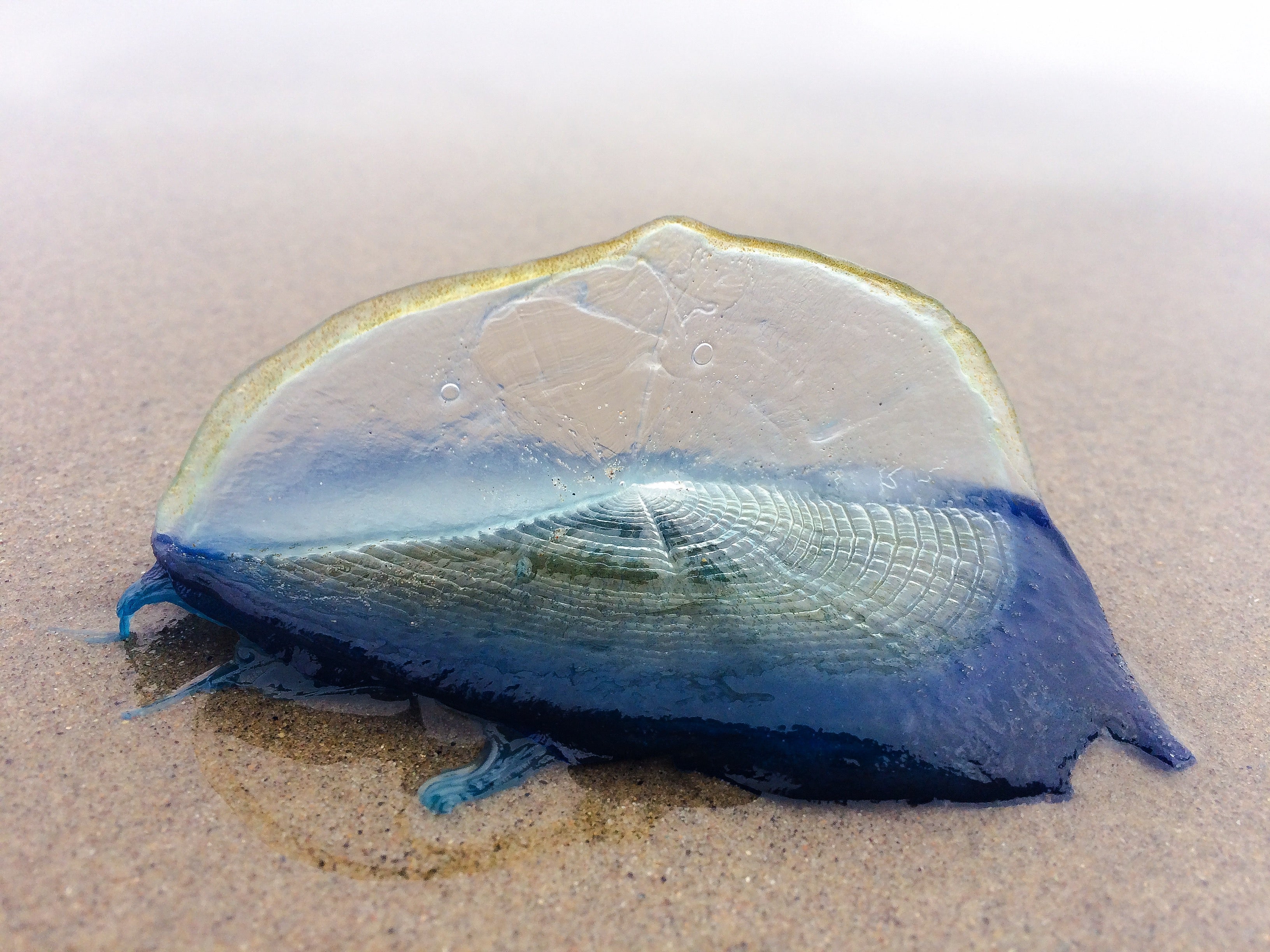
[ad_1]

Along the U.S. Pacific coast, droves of alien creatures about the size of a doughnut are washing up on beaches and leaving a mat of briefly blue debris that soon fades to a crackly white—hiding just how bizarre these animals are.
“Most people experience them as some kind of weird, off-white, old-toenail-color crunchiness that you walk on on the beach,” says Julia Parrish, a marine ecologist at the University of Washington. “They have no idea that they’re actually walking across billions and billions of organisms.”
The invasion may be a sign of warmer temperatures in the oceans or even of the large-scale climate pattern known as El Niño, although scientists say these connections are more hypothesis than proved fact.
Countless creatures, each one a blob reaching up to about 80 millimeters wide, can wash up on a single beach within days—because these predatory animals, called velellas (Velella velella), or by-the-wind sailors, are linked together. Such hydrozoans form a subgroup of Cnidaria, a phylum whose members also include jellyfish and coral. For velellas, each apparent “jellyfish” is a colony of many individual polyps hitched to a “float” they build together: a blue-rimmed, tentacled disk topped by a clear “sail.” Members of a colony use their stingers to capture the plankton that feeds their shared digestive system.
Velellas spend most of their lives far out in the ocean, with lots and lots of company. “There’s this source population offshore of probably billions of these guys somewhere in the central gyres of the oceans,” says Steven Haddock, a marine biologist at the Monterey Bay Aquarium Research Institute in California.
But every year around April winds along the U.S. Pacific coast turn, pushing toward the shore. And by-the-wind sailors live up to their nickname: where the winds go, so do velellas. “The jellies, once they’re in their sailing mode, they don’t have a way to steer. They don’t have a way to control or speed up or slow down their motion,” Haddock says. “They’re just at the mercy of the winds.”
Strangely, although the change in winds occurs annually, not every year brings a flood of velellas. The key may be temperature, according to research Parrish conducted a couple of years ago. When the ocean is warmer than usual during the preceding winter, mass strandings of velellas are more likely, that study found. Scientists aren’t sure whether the correlation implies that the animals do worse in the cold or that the warm oceans tweak the ecosystem in a way that benefits the creatures.
Two different phenomena have warmed oceans in recent years. One is El Niño, a weather pattern that begins in the equatorial Pacific and tends to bring wet weather to the southern U.S. and dry weather to the northern U.S. (Meteorologists have predicted that an El Niño is likely to begin in the coming months.) The other is a marine heat wave, which occurs when a cap of warm water forms and persists in the ocean. A major marine heat wave hit the northeastern Pacific Ocean in 2014 and lasted two years. Scientists have also been tracking a marine heat wave in the area since January 2022.
Parrish and her colleagues found the connection between velella strandings and ocean warming events in data gathered by the community science program she runs, Coastal Observation and Seabird Survey Team (COASST). It relies on local residents visiting their neighborhood beaches on a regular basis, and although the project focuses on seabirds, enough participants reported velella washups to facilitate the analysis.
Both Parrish and Haddock, who runs a website called JellyWatch, encourage people to report velella beach sightings to a crowdsourced science project. They also recommend a more generalist program called iNaturalist. The more data available to such programs, Parish and Haddock say, the more scientists can tease apart what’s happening to these strange creatures.
From his research, Haddock says he doesn’t think this year’s event or other recent strandings are unusual, adding that he has newspaper clippings from the early 1900s that reported swarms of beached velellas. “Those kinds of occurrences have been going on for forever, essentially,” he says.
[ad_2]